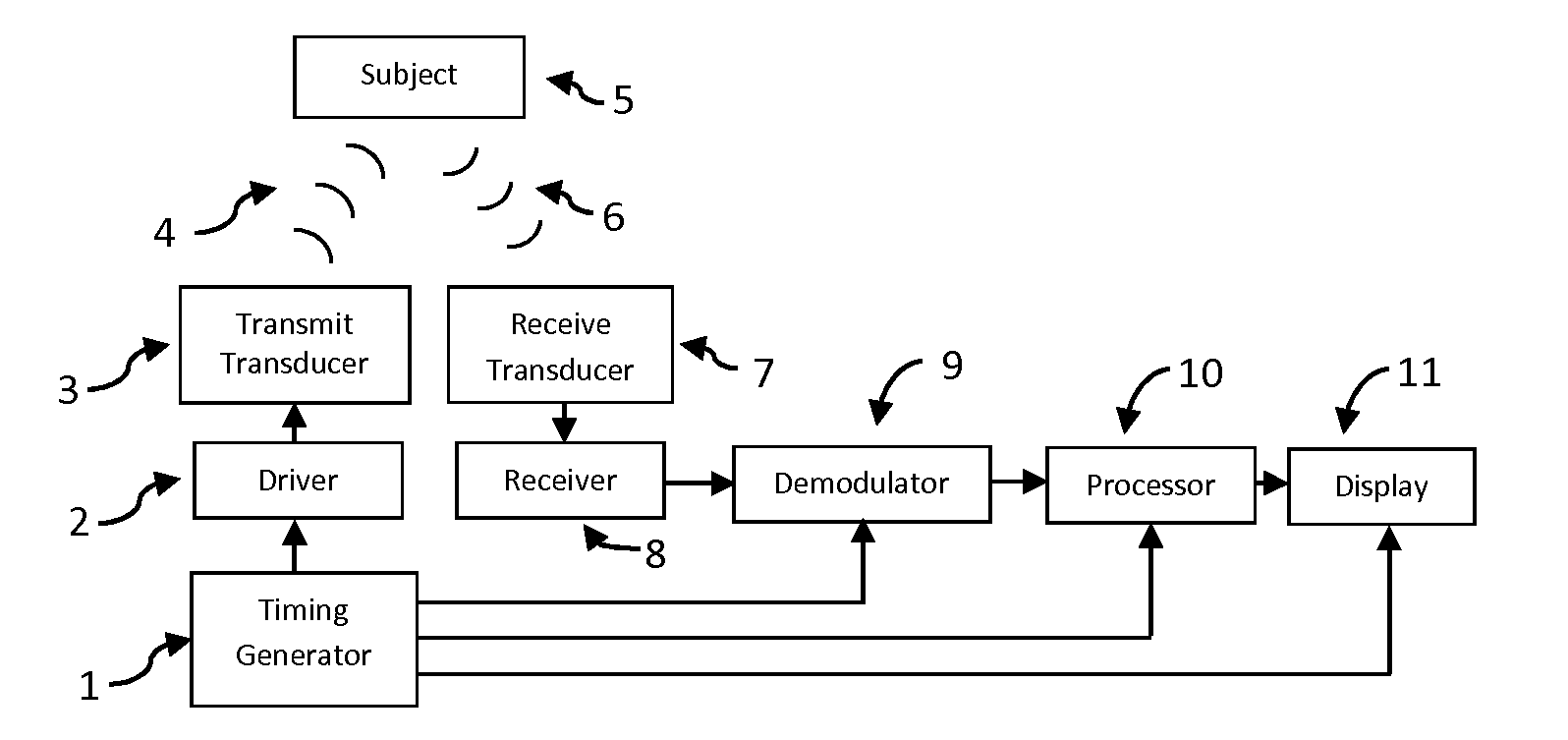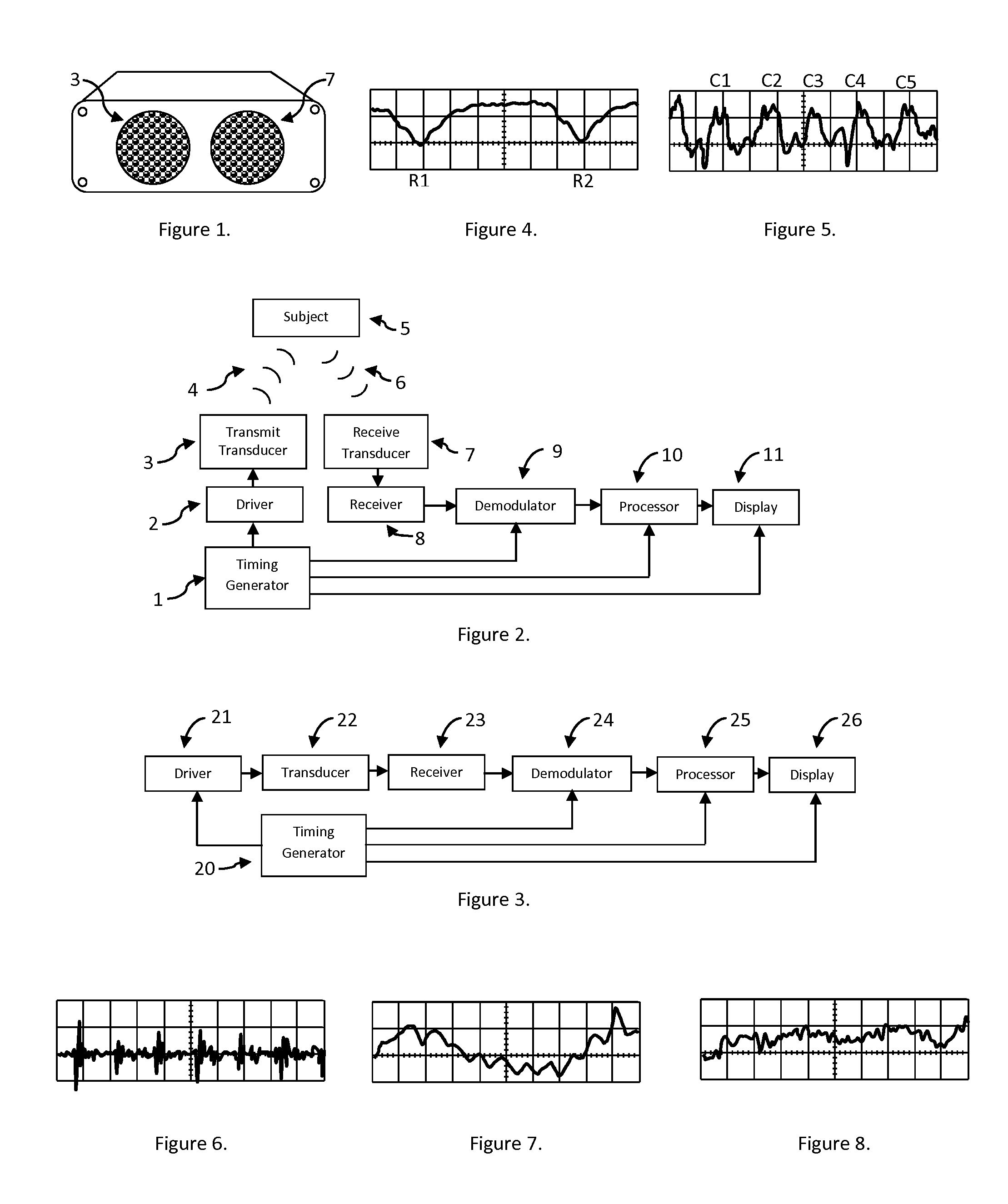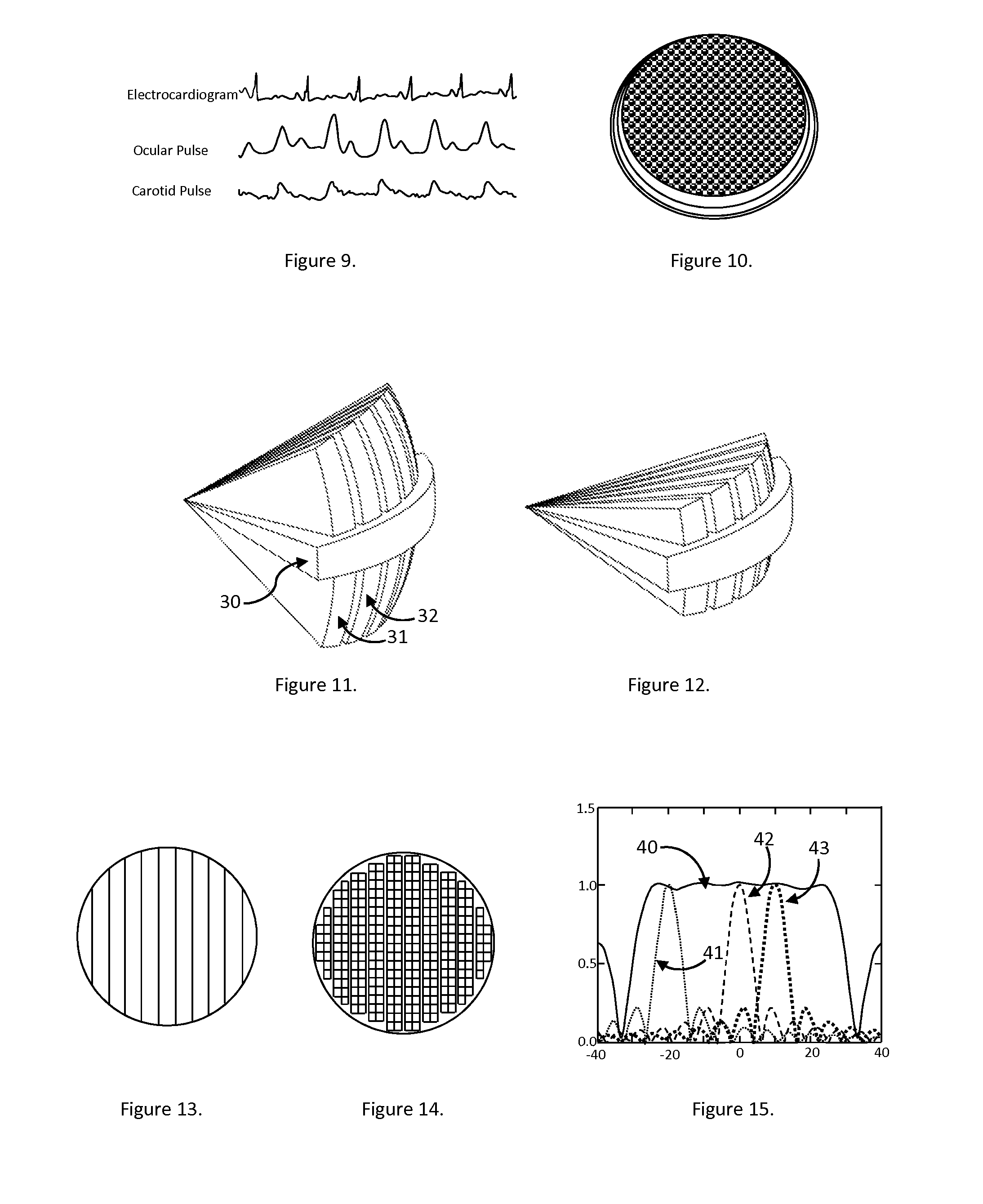Non-contact Biometric Monitor
a biometric monitor and non-contact technology, applied in the field of monitoring systems, can solve the problems of non-linear quadrature demodulator, inability to reduce radar clutter, and shape and amplitude of detected heart signals, and achieve the effect of convenient operation
- Summary
- Abstract
- Description
- Claims
- Application Information
AI Technical Summary
Benefits of technology
Problems solved by technology
Method used
Image
Examples
Embodiment Construction
[0043]The detailed description set forth below in connection with the appended drawings is intended as a description of presently preferred embodiments of the invention and does not represent the only forms in which the present invention may be constructed and / or utilized. The description sets forth the functions and the sequence of steps for constructing and operating the invention in connection with the illustrated embodiments.
[0044]FIG. 1 illustrates one embodiment of the biometric monitoring system preferably comprising a pair of ultrasonic transducers, wherein the transducers may be made from piezo-ceramics (e.g., lead metaniobate or lead-zirconate-titanate), piezo-polymers (polyvinylidene-fluoride) or other materials. In one preferred configuration, the pair of ultrasonic transducers may be of an electrostatic type, as described by, Muggli, et al., in U.S. Pat. No. 4,081,626 [10]; by Paglia in U.S. Pat. No. 4,085,297 [11]; and / or by Kirby, et al., in U.S. Pat. No. 4,872,148 [1...
PUM
 Login to View More
Login to View More Abstract
Description
Claims
Application Information
 Login to View More
Login to View More - R&D
- Intellectual Property
- Life Sciences
- Materials
- Tech Scout
- Unparalleled Data Quality
- Higher Quality Content
- 60% Fewer Hallucinations
Browse by: Latest US Patents, China's latest patents, Technical Efficacy Thesaurus, Application Domain, Technology Topic, Popular Technical Reports.
© 2025 PatSnap. All rights reserved.Legal|Privacy policy|Modern Slavery Act Transparency Statement|Sitemap|About US| Contact US: help@patsnap.com



